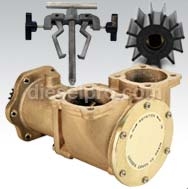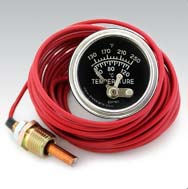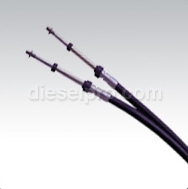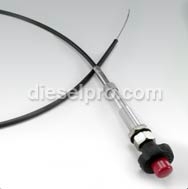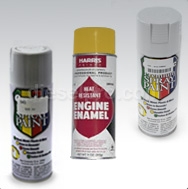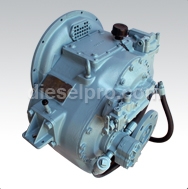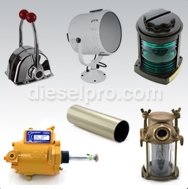The Caterpillar D336 is a 6-cylinder, 4-stroke diesel engine that played a key role in Caterpillar’s heavy-duty power solutions throughout the 1960s and 1970s. Part of the “300 series” of legacy engines, the D336 was designed for large stationary equipment, early construction machinery, and marine auxiliary systems, and featured mechanical direct injection and a robust iron block construction. The D336 was available in naturally aspirated and turbocharged configurations, with power output typically ranging between 225 to 325 horsepower, depending on application. While the D336 predated electronic engine management and emissions controls, it delivered consistent torque, high thermal stability, and extended operating life under high-load conditions—key requirements for industrial and marine markets at the time. Today, the D336 is still found powering vintage machinery, retrofitted gensets, and marine support systems in remote or unregulated areas where long-standing equipment remains in operation. Specification Details Engine Configuration Inline 6-cylinder, 4-stroke diesel Displacement 893 cubic inches (14.6 Liters) Bore x Stroke 5.75 in x 7.0 in (146 mm x 178 mm) Aspiration Naturally Aspirated or Turbocharged Compression Ratio ~15.5:1 to 16:1 (varies by version) Fuel System Mechanical Direct Injection Horsepower Rating 225 – 325 HP @ 1,800 – 2,100 RPM Torque Output Approx. 800 – 1,050 lb-ft Emissions Standard Pre-regulation (no emissions control equipment) Cooling System Liquid-cooled, belt-driven water pump Dry Weight ~4,000 – 4,500 lbs (1,800 – 2,040 kg) Oil Capacity Approx. 8 – 10 gallons (30 – 38 liters) Starting System Electric or Pony Motor (older configurations) Flywheel Housing SAE #1 or #2 (application dependent) The Caterpillar D336 engine was built for high-demand industrial, marine, and power generation sectors, offering durability and straightforward serviceability. Though production has ceased, it remains in operation in select industries, particularly where legacy equipment is preserved or reconditioned. In the 1960s and 1970s, the D336 powered many of Caterpillar’s medium to large-sized machinery, especially where steady power and torque were needed under full load. Large dozers and wheel loaders Pipe layers and cable plows Motor graders and excavators Pull-behind scraper units Mid-size cranes and lift equipment The engine’s mechanical simplicity made it ideal for field maintenance, and it remained a staple in off-highway fleets throughout North America and international markets for decades. The D336 was widely used in stationary and mobile generator systems, especially for remote operations that required self-contained power without reliance on a utility grid. Remote mining and logging camps Off-grid municipal and agricultural facilities Construction site generator trailers Pipeline booster stations Oilfield electrical support platforms The engine’s large displacement and mechanical injection system made it ideal for prime power and standby roles alike. Its long overhaul life also made it economical for low-speed genset applications. Oil and gas operations in the mid-20th century relied heavily on the D336 to power mobile and stationary equipment in the field. Skid-mounted generator sets Mud pump drive engines Drilling support trailers Compressor engines Hydraulic powerpacks for derricks Its torque curve and reliability under load made it ideal for 24/7 operation in high-temperature, high-dust environments typical of oilfield work in Texas, Canada, and the Middle East. While the D336 was not typically used for marine propulsion, it was installed in auxiliary roles aboard various commercial and industrial vessels. Generator sets for commercial boats and tugboats Bilge pump drives Hydraulic systems (crane and anchor operations) Fire pump units for maritime safety systems Refrigeration compressors on factory trawlers The engine’s mechanical construction and water-cooled block made it resilient in harsh marine environments where saltwater corrosion and heavy duty cycles are common. The Caterpillar D336 was deployed in stationary industrial applications, especially in systems that demanded long-duration performance with minimal oversight. Rock crushers and ore processing systems Cement and concrete mixing plants Large irrigation or drainage pump drives Agricultural grain elevators Bulk material handling facilities In many of these applications, the engine was paired with a mechanical clutch or generator head, providing a reliable source of continuous mechanical or electrical power for years. While no longer produced, the D336 is still maintained in legacy equipment, especially in export markets and vintage machinery restoration efforts. Its longevity and robust design have made it a candidate for engine swaps, rebuilds, and equipment rehabilitation. Restored Cat dozers, graders, and loaders Exported gensets for non-Tier 4 regions Power systems in Latin America, Africa, and Asia Custom-built stationary industrial skids Collector and museum-maintained vintage machines Availability of used cores and overhaul parts continues to support its ongoing use, especially where mechanical reliability takes precedence over modern emissions compliance. The Caterpillar D336 engine remains an important legacy platform in the evolution of heavy-duty diesel engines. Its mechanical fuel system, generous displacement, and proven reliability under extreme operating conditions made it a mainstay in mid-century Caterpillar equipment and industrial systems. While its applications have shifted toward restoration and legacy operations, the D336 still provides exceptional value for equipment that doesn’t require electronics, sensors, or complex emissions systems. For operators maintaining vintage Cat machinery or repurposing older gensets and industrial systems, the D336 continues to be a highly serviceable and dependable power solution.
Parts for Caterpillar D 336 Parts
-
Select Parts Category
 Loading...
Loading... Engine Specifications & Applications of the Caterpillar D336 Engine
Overview of the Caterpillar D336
Caterpillar D336 Engine Specifications
Applications of the Caterpillar D336 Engine
1. Construction and Earthmoving Equipment
Typical Equipment:
2. Power Generation Systems
Generator Applications:
3. Oilfield and Drilling Operations
Oilfield Equipment:
4. Marine Auxiliary Systems
Marine Uses:
5. Industrial Stationary Applications
Industrial Use Cases:
6. Repower and Legacy Equipment Markets
Modern Uses:
Conclusion



 Free US Calls: 1-888-433-4735
Free US Calls: 1-888-433-4735 International: 305-545-5588
International: 305-545-5588






